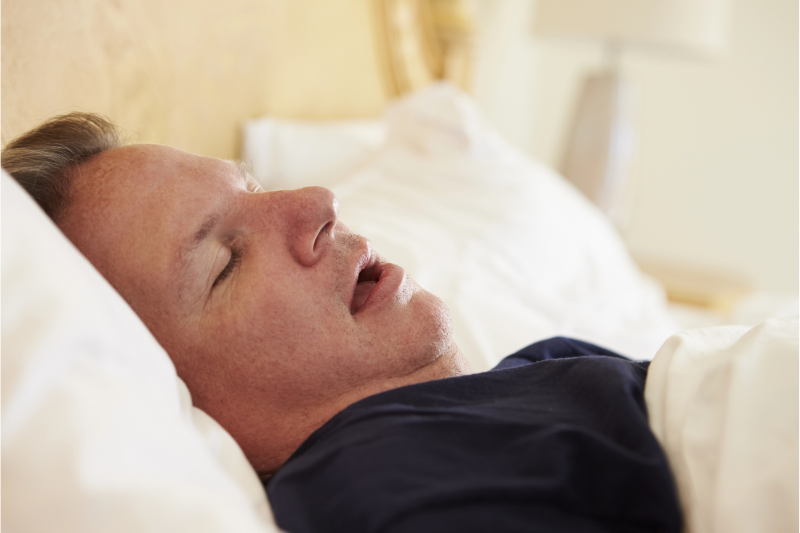Disrupted sleep, particularly due to sleep-related respiratory disorders (SRRDs), can have a significant impact on your health, potentially even contributing to high blood pressure or hypertension. Both SRRDs and hypertension are highly prevalent conditions, affecting millions of adults worldwide. Many people struggle with sleep disorders in Midtown, NY, conditions that affect the quality, amount, and timing of sleep you get. These sleep disorders can significantly impact your daily life and energy levels.
Understanding Sleep Disorders in Midtown, NY
Sleep-related respiratory disorders are a group of conditions that disrupt your breathing patterns during sleep. The most common type is obstructive sleep apnea (OSA). People with OSA experience repeated episodes where their upper airway collapses partially or completely, briefly stopping their breathing. This can happen hundreds of times per night, leading to fragmented sleep and daytime sleepiness. Symptoms of OSA include loud snoring, gasping for air during sleep, and waking up with a dry mouth or headache.
Another type of SRRD is central sleep apnea (CSA). Unlike OSA, CSA is caused by problems with the brain’s signals to the breathing muscles, leading to shallow breathing or pauses in breathing during sleep.
Less common sleep-related respiratory disorders include sleep-related hypoventilation, where the body doesn’t remove enough carbon dioxide during sleep, and snoring, which can be a disruptive symptom but doesn’t always indicate a more serious condition.
Pathophysiology
During OSA, relaxed muscles in the throat can cause the airway to narrow or close completely as you sleep. This briefly stops your breathing and disrupts your sleep cycle. The body struggles to resume breathing, leading to arousal episodes that often go unnoticed. This cycle of oxygen deprivation and arousal can happen hundreds of times a night, hindering deep sleep and overall sleep quality.
In CSA, the problem lies in the brain’s communication with the breathing muscles. The brain fails to send the proper signals, leading to shallow breathing or complete pauses in breathing. This also disrupts sleep patterns and oxygen levels.
Both OSA and CSA lead to fragmented sleep, depriving the body of the restorative benefits of deep sleep. This chronic sleep deprivation can have a significant impact on various bodily functions, including blood pressure regulation.
Hypertension: Overview and Impact
Hypertension, also known as high blood pressure, is a chronic medical condition in which the force of blood pushing against the walls of blood vessels is consistently too high. This persistent pressure can damage the arteries over time, leading to various health problems.
There are two main classifications of hypertension:
Essential Hypertension (Primary Hypertension)
This is the most common type, accounting for about 90% of all hypertension cases. The exact cause of essential hypertension is unknown, but several risk factors can contribute to its development, including:
- Lifestyle factors: Unhealthy diet (high in sodium and low in fruits and vegetables), lack of physical activity, obesity, and excessive alcohol consumption.
- Genetics: Family history of hypertension increases your risk.
- Age: Hypertension risk increases as you age.
- Race: African Americans are more likely to develop hypertension than other racial groups.
Secondary Hypertension
This type is less common, accounting for about 5-10% of cases. It has a specific identifiable cause, such as:
- Underlying medical conditions: Kidney disease, hormonal imbalances (e.g., Cushing’s syndrome), thyroid disorders, sleep apnea, and congenital blood vessel abnormalities.
- Medications: Certain medications, such as birth control pills, some pain relievers (e.g., nonsteroidal anti-inflammatory drugs [NSAIDs]), and decongestants, can increase blood pressure as a side effect.
Blood Pressure Measurement and Diagnosis
Blood pressure is recorded with two readings in millimeters of mercury (mmHg):
- Systolic pressure (top number): This represents the pressure when your heart contracts and pushes blood out to the rest of your body.
- Diastolic pressure (bottom number): This represents the pressure between heartbeats when your heart relaxes and refills with blood.
According to the latest guidelines from the American Heart Association (AHA), hypertension is now categorized as follows:
- Normal blood pressure: Less than 120/80 mmHg
- Elevated blood pressure: Systolic pressure between 120-129 mmHg and diastolic pressure less than 80 mmHg
- Stage 1 hypertension: Systolic pressure between 130-139 mmHg or diastolic pressure between 80-89 mmHg
- Stage 2 hypertension: Systolic pressure 140 mmHg or higher or diastolic pressure 90 mmHg or higher
Blood pressure can fluctuate throughout the day. Typically, two or more readings on separate occasions are needed to diagnose hypertension.
Risk Factors
Several factors contribute to the development of hypertension, including:
- Diet: A diet high in sodium and saturated fat can increase blood pressure.
- Physical inactivity: Regular exercise helps manage blood pressure.
- Stress: Chronic stress can elevate blood pressure.
- Medical conditions: Diabetes, obesity, and kidney disease are linked to an increased risk of hypertension.
- Age: The risk of hypertension increases with age.
- Genetics: Some people are genetically predisposed to developing hypertension.
Mechanistic Studies
Research suggests that SRRDs contribute to hypertension through several mechanisms:
- Sympathetic nervous system stimulation: During apneic episodes, the body struggles to breathe, triggering the sympathetic nervous system, which releases stress hormones like adrenaline. These hormones cause blood pressure to rise.
- Inflammation: Sleep-related respiratory disorders are linked to chronic inflammation, which can damage blood vessels and contribute to hypertension.
- Impaired vascular function: The repeated stress of oxygen deprivation and reoxygenation during sleep-related respiratory disorders can damage the blood vessels, making them less flexible and contributing to high blood pressure.
Impact of SRRD Treatment on Hypertension
Continuous Positive Airway Pressure (CPAP) Therapy
The gold standard treatment for OSA is continuous positive airway pressure (CPAP) therapy. CPAP uses a mask to deliver a gentle stream of air that keeps your airway open during sleep, preventing apneas and hypopneas (shallow breathing).
Studies have shown that CPAP therapy can significantly reduce blood pressure in patients with OSA and hypertension. By improving sleep quality and reducing the stress on the body from repeated apneas, CPAP helps to regulate blood pressure.
However, adherence to CPAP therapy can be challenging due to discomfort or difficulty wearing the mask. It’s important to discuss any concerns with your doctor or a sleep specialist to find solutions that improve comfort and adherence, ultimately leading to better blood pressure control.
Other Treatment Modalities
For some patients, alternative treatments for SRRDs may be considered, such as oral appliances that help maintain airway patency during sleep or surgery to remove excess tissue in the throat. While these options may not be as effective as CPAP for treating OSA, they can still improve sleep quality and potentially have a positive impact on blood pressure.
In addition to addressing the underlying sleep disorder, lifestyle changes like weight loss, smoking cessation, and reducing alcohol consumption can significantly benefit both SRRDs and hypertension management. Reducing weight can help open the airway and improve sleep quality, while smoking and excessive alcohol intake increase inflammation and contribute to high blood pressure.
Clinical Implications and Recommendations
Screening Recommendations
Given the potential link between SRRDs and hypertension, screening for both conditions is important. Individuals with symptoms, such as loud snoring, daytime sleepiness, or frequent nighttime awakenings, should be screened for sleep apnea. A sleep study can diagnose the presence and severity of sleep apnea. People with hypertension, particularly those who are difficult to control with medication, should be evaluated for potential SRRDs. A collaborative approach between sleep specialists and cardiologists is often beneficial for managing patients with both conditions.
Management Strategies
Treating the underlying sleep disorder in Midtown, NY, is the cornerstone of managing SRRDs and their potential impact on hypertension. Effective treatment of OSA with CPAP or other appropriate modalities can significantly improve sleep quality and lower blood pressure.
Conclusion
The growing body of research suggests a strong link between sleep disorders in Midtown, NY and hypertension. While further research is needed, it’s evident that effective SRRD treatment can significantly improve sleep quality and potentially lower blood pressure. Early diagnosis, collaborative care between sleep specialists and cardiologists, and patient education are key to optimizing health outcomes for patients with both SRRDs and hypertension.
Do you suspect you might have sleep apnea or another sleep disorder in Midtown, NY? Are you concerned about high blood pressure? If so, don’t hesitate to schedule an appointment with Kamelhar Pulmonology to discuss your concerns. Early diagnosis and treatment can significantly improve your health and well-being.
Kamelhar Pulmonary offers comprehensive diagnostic and treatment services for sleep apnea and other sleep disorders in Midtown, NY. We are committed to helping you achieve a good night’s sleep and improve your overall health.



